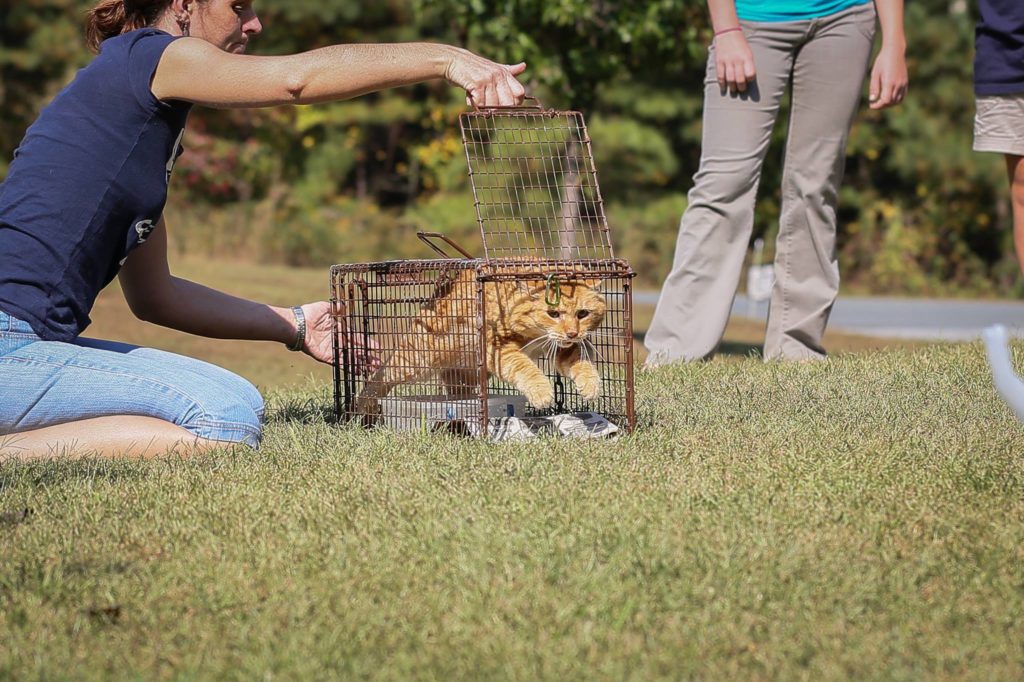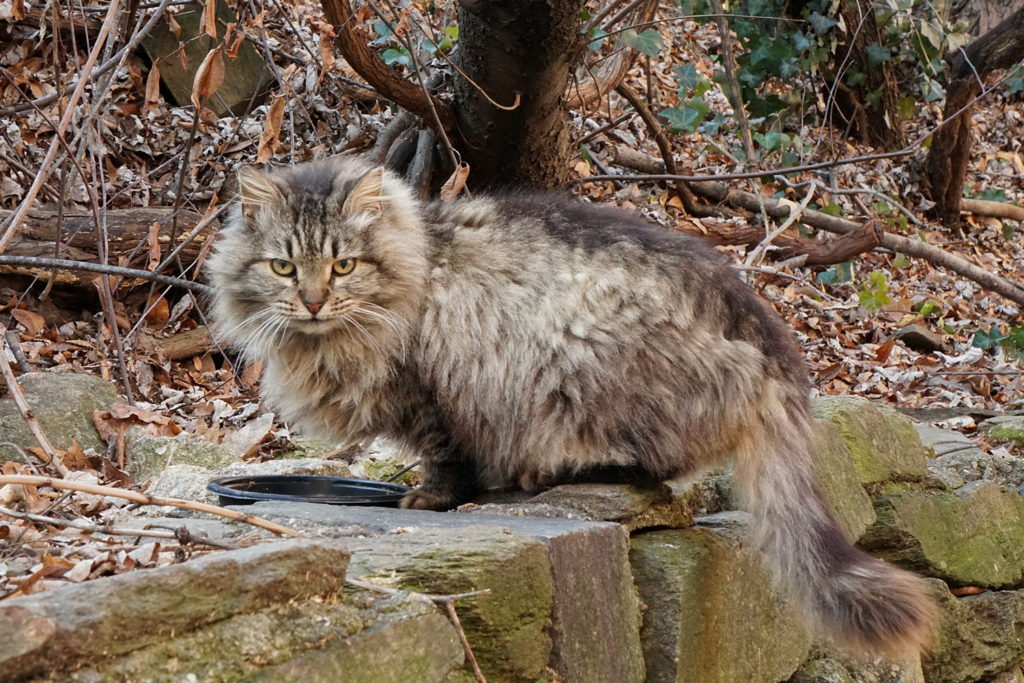What is TNR?
Trap-neuter-return (TNR) is the humane, effective way of managing free-roaming, unowned cats. Cats are humanely trapped and transported to a spay/neuter clinic for sterilization, vaccinations, flea and deworming treatment, ear-tipping, and microchipping. Once recovered from surgery, the cats are returned to their original location, where they are fed and monitored by caretakers.
Some of the benefits of TNR include:
- Stabilizes and eventually reduces outdoor cat populations
- Mitigates nuisance behaviors (such as spraying and fighting)
- Improves the lives of individual cats and the people who care for them
- Decreases the numbers of cats and kittens surrendered to shelters
- Reduces the risk of rabies in communities
Because of the success of TNR programs across the U.S., many municipalities are making TNR their official approach to outdoor cat management. TNR is practiced around the world and is endorsed by numerous animal protection organizations, including the Humane Society of the United States, the ASPCA, and Best Friends Animal Society.

Why are there cats living outside?
Outdoor cats are found in almost every neighborhood in the U.S. While some are owned cats allowed outside, many are “community cats”—a term used for free-roaming, unowned cats. They’re often the offspring of lost or abandoned pet cats, but most community cats are feral (meaning they’re not socialized to humans) because they weren’t exposed to people during their first months of life.
While community cats don’t have a traditional owner, they’re usually fed by caring people and can live happy, healthy lives with TNR intervention.
Cats who have already been through a TNR program will have a left ear-tip. Ear-tipping is a universally accepted method to identify a spayed or neutered and vaccinated community cat. The procedure is done by a veterinarian during the spay/neuter surgery while the cat is under anesthesia.

How does TNR save lives?
Studies show that a large percentage of cats and kittens surrendered to shelters are community cats or their offspring. Most are feral and not suitable for adoption; even kittens young enough to be socialized may be euthanized since few shelters have the resources to tame large numbers of feral kittens.
TNR ends the cycle of breeding while allowing the existing cats to live healthier, safer lives.
Low cost spay-neuter clinics
These clinics are located in Montgomery County, Maryland, or in the surrounding area of Maryland and the District of Columbia:
- Metro Ferals
- http://www.metroferals.org
- Prince George’s SPCA
- https://www.pgspca.org
- Spay Now (Laurel)
- https://www.spaynow.com
- Spay Spa and Neuter Nook (Davidsonville)
- http://www.spayspa.org
- Humane Rescue Alliance (DC cats only)
- http://www.humanerescuealliance.org
- Spay Spot (Upper Marlboro)
- https://www.lastchanceanimalrescue.org
- Bowie Spay and Neuter
- https://bowiespay.com
- Montgomery County Humane Society
- Hanna’s Clinic (Owned pets only)
Learn more
- Step by Step Guide: Trap-Neuter-Return (video)
- https://www.youtube.com/watch?v=IarsSTLUdTw
- How individuals can help community cats
- https://www.humanesociety.org/resources/how-individuals-can-help-community-cats
- How to help your neighborhood’s feral felines
- https://www.humanesociety.org/news/keeping-neighborhood-cats-safe
- Caring for cats in traps
- https://www.neighborhoodcats.org/how-to-tnr/trapping/caring-for-cats-in-traps
- Feeding tips
- https://www.neighborhoodcats.org/how-to-tnr/colony-care/feeding
- DIY cat shelters
- https://www.alleycat.org/resources/feral-cat-shelters-care/
- Winter shelter tips
- https://www.neighborhoodcats.org/how-to-tnr/colony-care/feral-cat-winter-shelter
- How to keep water from freezing
- https://www.neighborhoodcats.org/how-to-tnr/colony-care/stop-freezing-water
